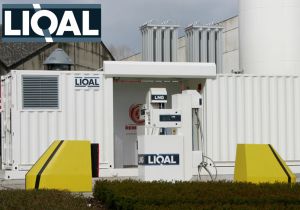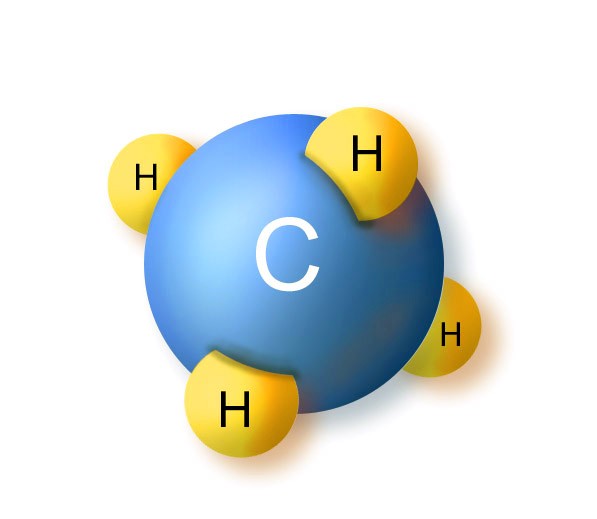For the September ’19 issue of LNG Industry, LIQAL’s CEO Jorg , explains how technological developments, along with an increase in distribution infrastructure, are enabling the transition from diesel to more sustainable alternatives such as LNG and bio-LNG.
 The next station
The next station
The future is small scale, which is a big deal. Diesel must go. The transport sector wants to accelerate the decarbonisation of transportation fuel and reduce dependency on oil-based fuels. Why? Because there is no future for these polluting fuels. Strict environmental regulations to reduce greenhouse gas emissions and lower fuel prices are the main drivers for providing a clean alternative to diesel. LNG is an attractive ecological and economic alternative for heavy transport and is well-placed to meet new supply demands.
The challenge is to act quickly and improve the availability of fuelling infrastructure for end users like heavy-duty trucks and ships. For companies like LIQAL, one way to achieve this is to go small.
Small scale LNG is the big thing for the future according to LIQAL. The Dutch LNG technology developer has seen a tidal change in the industry and firmly believes that LNG is the next station on the road to decarbonisation.
From baseload to small, stand-alone plants
A typical baseload plant supplies natural gas as LNG from the natural gas field along the supply chain by ship to the end terminal. LNG is brought to the end user in gaseous form. At the terminal it is put into the natural gas network of the continent it arrives in. This intercontinental LNG infrastructure has been around for decades, but now small scale technology is bringing production closer to the end user with the decentralised production of liquefied gas. Unlike large scale plants, small scale liquefaction units do not need to be located near a large gas source.
The need for small scale distribution infrastructure is also rising rapidly, in response to increasing demand for LNG as a transport fuel.
Here, small scale means everything that happens after the LNG terminal. Natural gas is taken in liquid form by road tanker or small ship and is distributed to fuelling stations, LNG powered ships or industrial users that have a storage tank. Small scale liquefaction plants serve specific markets with smaller production capacity.
Today, small scale LNG projects can offer clients cost, specification and building solutions that were unheard of a few years ago. This is the next station; a major step towards replacing conventional fuelling infrastructure.
LIQAL service stations provide ‘plug and play’ options that require lower investment and faster implementation times. They are scalable, which allows operators to increase capacity based on shifting demand. Performance support ensures these stations are always up to date, and that the next station leads the way.
A finely meshed infrastructure
Significant growth of fuelling locations over the next 10 years is expected, as there are currently only 200 LNG fuelling stations in the whole of Europe. But the finely meshed distribution infrastructure needed to make the switch to LNG is being built right now.
Government policy has not always focused on sustainability in a concrete way but things are changing. EU policy goals aim to reach over 30% renewable share in energy consumption by 2030. This would be a huge achievement and the trend is heading in the right direction.
A mixture of alternatives is needed to reduce dependency on oil-based fuels and LNG plays its part along with electricity and hydrogen. Switching to LNG in the heavy transport sector significantly reduces emissions of particulate matter, SOx, NOx and CO2. A CO2 reduction of up to 20% can be achieved compared to diesel. Furthermore, with bio-LNG, the CO2 reduction can exceed 90%.
This shift is vital and can be achieved by producing LNG or bio-LNG on a micro scale using liquefaction technology.
Micro-liquefaction technology
LIQAL has a patented micro-liquefaction product range. With this technology, the company supplies and deliver solutions for diverse needs such as storage tank conditioning and bio-LNG production. As demand grows for bio-LNG, liquefaction technology can be used for both LNG and bio-LNG production.
Successful Remitrans project
Micro-liquefaction units are already in operation at seven LNG fuelling stations, including the cutting-edge station built for transport company Remitrans at Ninove, Belgium.
The station has an LNG trailer unloading section, an LNG cryogenic 70 m³ storage tank and micro-liquefaction unit. This ensures unlimited holding time of LNG and ensures that trucks can be supplied with the desired pressure and temperature without the use of liquid nitrogen. The integrated pump and conditioning section heats up the LNG to the correct saturation temperature during transfer to the truck. This minimises the heat input from the fuelling process. The MID certified LNG dispenser has a heated and purged nozzle docking bay and a break away ESD device.
The advanced remote monitoring and trending system is equipped with advanced iSCADA process control software and key performance indicator (KPI) dashboards, designed for fully automated and unmanned operation.
Biogas circular production
The global shift to a low-carbon, circular economy is underway. This requires a change in the way fossil-based raw materials are used. LIQAL has scaled up micro-liquefaction to produce bio-LNG, which is well-aligned with the transition to a low-carbon transport sector. It unlocks the bio resources for gas and creates a closed loop system.
Biogas is made from organic residues such as food waste. It is a gas produced by bacterial action on organic waste and used as a fuel. The difference with natural gas lies in its carbon footprint: it is the same molecule, but the source of the carbon is a biological source. When the methane molecule (which is around 60% of the biogas) is isolated it can be liquefied into bio-LNG. It is more costly to produce than fossil LNG, but thanks to enabling technologies, it is becoming more attractive to produce.
Substantial amounts of biogas are already made globally. This can be transformed into increasing amounts of bio-LNG and blended with fossil LNG for use as a transport fuel. A huge advantage of this transition is that the fuelling infrastructure for bio-LNG and LNG can be located at the same station, making it easy to switch to biofuel. Investments and subsidies in LNG infrastructure development facilitate the transition to decarbonised transport fuels.
Operation philosophy: get on with your core business
LNG fuelling stations are small process installations, but they are not as simple as a diesel station. The work is not over once the facility has been installed. These sites need to be regularly checked and actively managed. However, the technology is new and requires a considerably high level of expertise and time and many clients simply do not have the time or the expertise to keep the fuelling stations operating.
LIQAL’s LNG fuelling stations are equipped with a remote service and operation platform for performance monitoring and maintenance. Via this platform LIQAL offers to take care of the advanced operations, enabling its clients to make use of its network of LNG fuelling stations without the need to build up specific expertise. The company saw that more clients were looking for a full-service maintenance contract and began to collaborate with strategic partners to perform checks and local maintenance services. The partners are trained and guided by LIQAL and provide independent maintenance. The same LIQAL platform provides information and allows clients and maintenance partners to share notes. Moreover, the KPI dashboard allows users to regularly check-in and see how much LNG is consumed in real-time or which dispenser is used the most.
The next station: a big step towards decarbonisation
The small scale LNG sector and its distribution infrastructure is evolving fast. What is more, this emerging market will be guided by new supply chain technologies and will lead to increasing use of large scale infrastructure such as terminals to serve the small scale market. This means that decentralised production of LNG or bio-LNG will gain momentum as the flexibility of the supply lines increases. And this is just the start. With boosted levels of innovation and investment, LNG is an important contributor to sustainability and decarbonisation and brings us a step closer to the switch to fully green transport fuel.
Source: www.liqal.com
